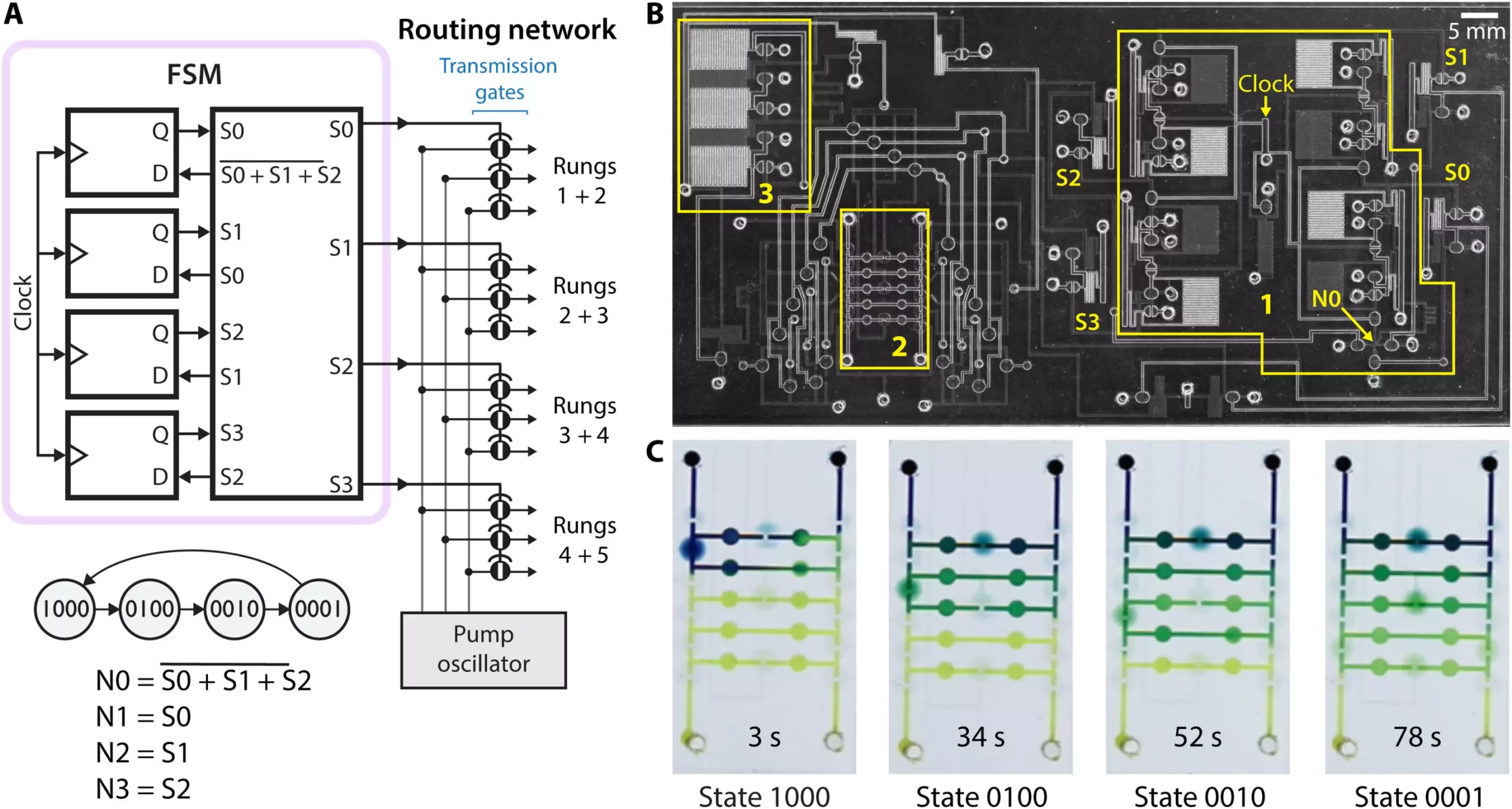A team of biochemical engineers from the University of California, Irvine, has developed a finite state machine (FSM) using microfluidic valves and a pneumatic circuit to create a lab-on-a-chip. The goal of automating many chemical processes currently done by hand has been sought after by mechanical and biochemical engineers for several years. By automating these processes, such tasks would be less expensive and could potentially offer medical lab results in a matter of minutes instead of hours.
Using Pneumatics to Create a Lab-on-a-Chip
The team of researchers at the University of California, Irvine, designed a microfluidic device that uses pneumatics to move liquids instead of electricity. They created a small sandwich made of glass panes and a sheet of silicone, with the glass panes etched to allow liquid to pass through and the silicone sheet poked with holes to connect the channels in the glass panes.
To represent zeroes and ones in the FSM, the team used atmospheric pressure to represent a zero and vacuum-induced pressure to represent a one. To create the coding programs, the team poked holes in the silicone sheet, similar to punch cards used in the early days of computers.
Testing the Lab-on-a-Chip
The team tested their idea by creating a simple four-bit lab-on-a-chip that could conduct serial dilution, which determines the concentration of a chemical in a solution. The researchers demonstrated that microfluidic devices like theirs could be used to test blood not only for viruses like SARS-CoV-2 but also their concentrations.
The research team at the University of California, Irvine, has developed a pneumatic circuit-powered lab-on-a-chip using an FSM. The team’s work is published in the journal Science Advances. By automating chemical processes, tasks could be less expensive and offer medical lab results in minutes rather than hours. The use of pneumatics in microfluidic devices could potentially revolutionize the medical field and lead to faster and more accurate testing.


Leave a Reply